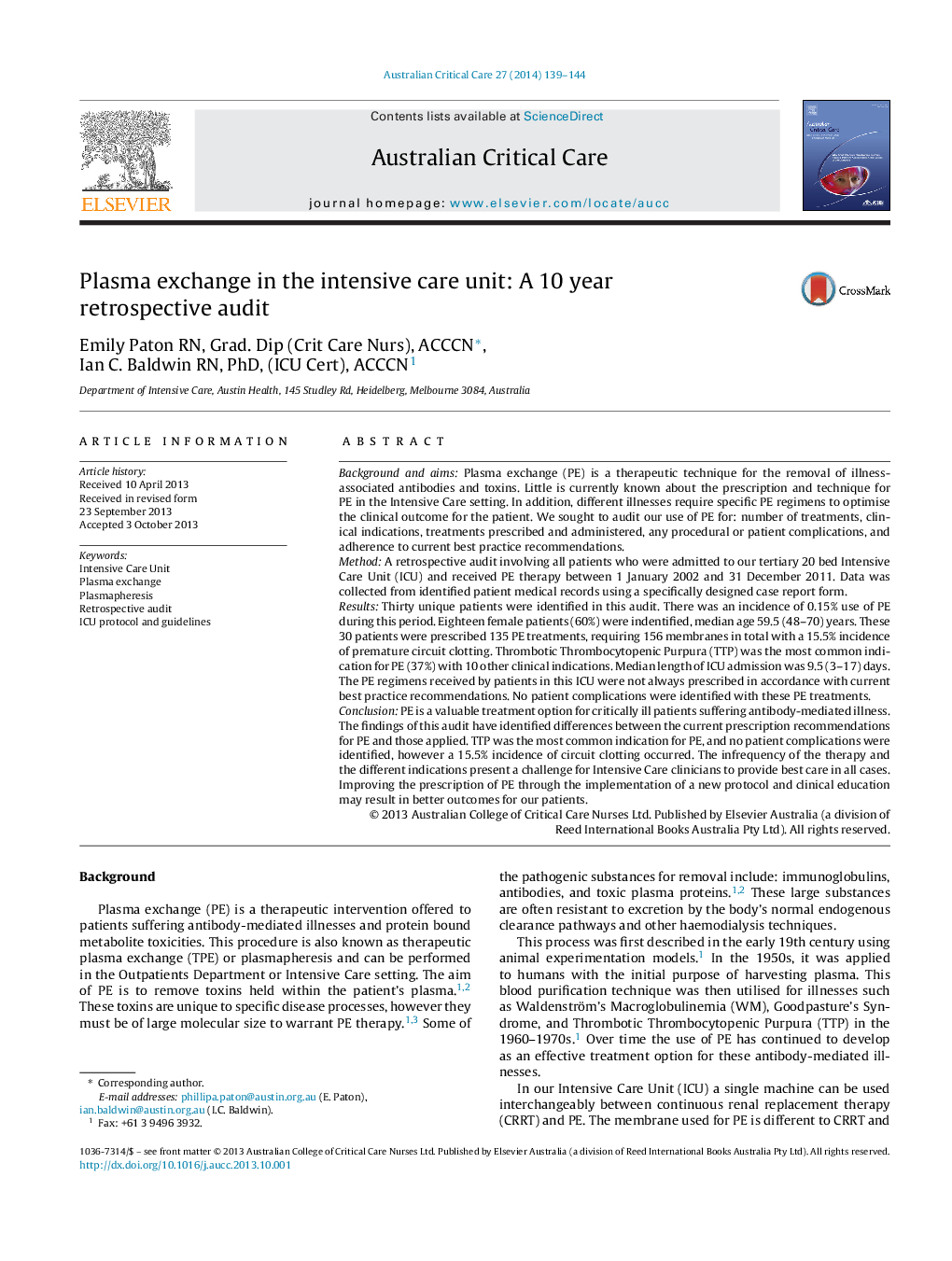| کد مقاله | کد نشریه | سال انتشار | مقاله انگلیسی | نسخه تمام متن |
|---|---|---|---|---|
| 2607414 | 1134242 | 2014 | 6 صفحه PDF | دانلود رایگان |
Background and aimsPlasma exchange (PE) is a therapeutic technique for the removal of illness-associated antibodies and toxins. Little is currently known about the prescription and technique for PE in the Intensive Care setting. In addition, different illnesses require specific PE regimens to optimise the clinical outcome for the patient. We sought to audit our use of PE for: number of treatments, clinical indications, treatments prescribed and administered, any procedural or patient complications, and adherence to current best practice recommendations.MethodA retrospective audit involving all patients who were admitted to our tertiary 20 bed Intensive Care Unit (ICU) and received PE therapy between 1 January 2002 and 31 December 2011. Data was collected from identified patient medical records using a specifically designed case report form.ResultsThirty unique patients were identified in this audit. There was an incidence of 0.15% use of PE during this period. Eighteen female patients (60%) were indentified, median age 59.5 (48–70) years. These 30 patients were prescribed 135 PE treatments, requiring 156 membranes in total with a 15.5% incidence of premature circuit clotting. Thrombotic Thrombocytopenic Purpura (TTP) was the most common indication for PE (37%) with 10 other clinical indications. Median length of ICU admission was 9.5 (3–17) days. The PE regimens received by patients in this ICU were not always prescribed in accordance with current best practice recommendations. No patient complications were identified with these PE treatments.ConclusionPE is a valuable treatment option for critically ill patients suffering antibody-mediated illness. The findings of this audit have identified differences between the current prescription recommendations for PE and those applied. TTP was the most common indication for PE, and no patient complications were identified, however a 15.5% incidence of circuit clotting occurred. The infrequency of the therapy and the different indications present a challenge for Intensive Care clinicians to provide best care in all cases. Improving the prescription of PE through the implementation of a new protocol and clinical education may result in better outcomes for our patients.
Journal: Australian Critical Care - Volume 27, Issue 3, August 2014, Pages 139–144
